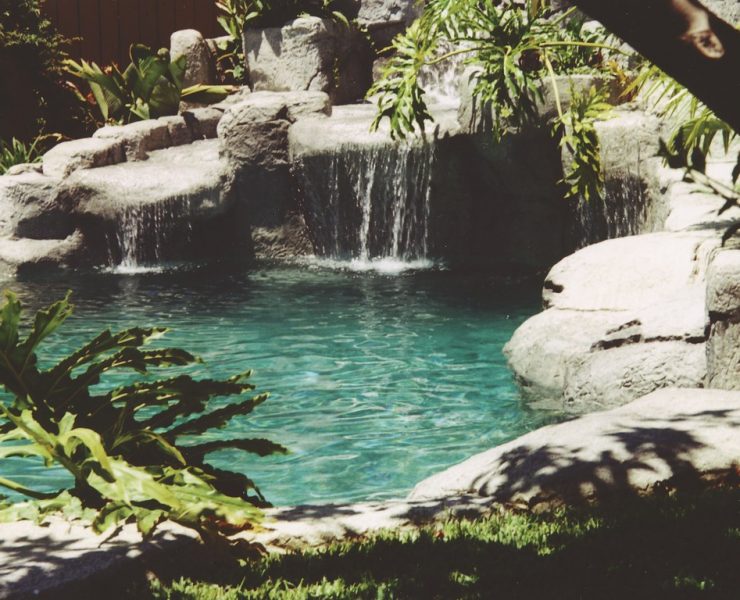naturalistic
I live in the Rocky Mountains of Colorado on the banks of the Arkansas River - a beautiful place and a beautiful river. Within easy reach of my home, the Arkansas flows swiftly in certain spaces, cascading over rugged terrain, then slows down in others to form deep pools that reflect brilliant skies and create a diversity of aquatic habitats. As I watch the river flow, sometimes I can't help thinking back to my days at a trout hatchery and recognizing that if we'd had such a volume of moving water available to us in our operation, we could have produced millions more pounds of healthy fish. I'm simply amazed by the power and complexity of the water I watch, and especially by its ability to
It's something we in the business overlook all too often: Swimming pools, kids and summertime go together. That's why pools have been so enduringly popular, even at a time when watershapers seem to be focusing more than ever before on principles of design and how their work can be artfully integrated into the landscape. I came to building pools from an extensive background in building man-made rocks for theme parks, which has colored my perspective on the way my pools are used. I've also been swimming in backyard pools since I was a kid, and I've built all sorts of rockwork designs for all sorts of
Some may disagree with me, but I don't see faux rockwork as a "sculptor's art form." For more than 25 years, I've made sure that Mother Nature is the one who does the detail work; what I do is take copies of her artwork to job sites and install them in creative and interesting ways. A long time ago, I developed a method of making castings of real rocks using my own formulation of fiberglass and epoxy. These are exact replicas of the real thing: Once mounted on steel structures in swimming pools or other hardscape applications, the panels are
I believe that what we strive for in our watershapes is evident in the paintings and sculpture of the great masters. The harmony, the beauty, the drama, the excitement of the senses, the total captivation of the viewer create an experience we call great art. The more we can reflect on this work and use it as a lofty benchmark, the more effective our watershapes become. I've always believed that the best way to work at the highest level is to follow the tenets of
I remember several years ago, back before it was really fashionable to build completely naturalistic pools, that I decided this was exactly what I wanted to do. This was in the very early 80s, when you'd see maybe some rocks on the bond beam or a waterfall on the end of the pool - but that was about as natural as it got back then. My new idea was to create environments that were completely natural, stem to stern. I tried presenting the concept to a number of potential clients, explaining how we could do things like angle the top of the pool and install rocks all around the edge and create natural
Believe it or not, I became involved with this project because my nine-year-old daughter, Savannah, plays tackle football. I was watching one of her games when I overheard a teammate's father talking about a renovation at the Palm Beach Zoo. Joining the conversation, I learned that he owned a general contracting company that builds large commercial projects and that he'd been hired to renovate the zoo's parking lot and utility infrastructure and build an exhibit facility for two Bengal tigers. It was, he told me, the first phase of a long-term plan to upgrade the zoo at Dreher Park, a complex that also includes a planetarium and a museum. The work at the zoo, he said, was one phase of an effort by the city to create a quality facility that ultimately could serve as a low-cost alternative to Orlando's theme parks. As part of the project, my new friend's firm also was acting as general contractor in the construction of a new tiger pen, the first of a series of new display areas planned for the modest zoo. When he talked about the watershapes involved, I jumped: The design
What is good lake construction? What makes some pristine and beautiful while others seem fetid and slimy? To discover the answer to these and other questions, we need to start by defining what we mean by "lake." It may seem arbitrary, but the distinction can be an important one, especially to people who own them. You don't want to insult anyone by calling their lake a pond or lagoon, for example. By the same token, you don't want to seem ill-informed or unprofessional in referring to their waterfeature as a lake. Given the different
The most important use of faux rock is to make a geological statement - to provide an important accent or focal point in a landscape where none exists. My goal is to create rock formations that complement and enhance the natural setting and fit in harmoniously with their surroundings. That's a point builders who use artificial rock sometimes fail to grasp. They'll execute an ambitious scheme with lots of interesting, well-crafted rockwork, but it ultimately looks unnatural because the rocks they've created have no logical relationship to any indigenous formations or anything else in the surrounding space. I approach things in a different way - one that embraces the site and all of its features. I select, form and install faux rocks that, together, create interesting and beautiful statements in the overall landscape design. As I work, I make my installations to stand up to the question, "Is this rock formation
As I see it, there are six main types of watershapes: pools, spas, fountains, ponds, waterfalls and streams. Although there is tremendous variety within each category, I think most of us in the business would put pools, spas and fountains in one sub-group and ponds, waterfalls, and streams in another. Obviously, there's room for overlapping here - waterfalls installed with pools, for example, or fountains in the middle of ponds. The key distinction for me, however, is the closeness with which a pond, waterfall or stream must imitate
Some projects grab you right from the start, and this was definitely one of those cases. As the principals at Herzog Development Corp. explained in our initial meeting, their new development was to be a "golf course community with a rustic feel, but refined." To embody that refinement, Don Herzog and his son, Daryl, wanted some sort of elaborate waterfeature - something that would break the monotony of the stark, flat terrain of northeast Dallas County and welcome






















